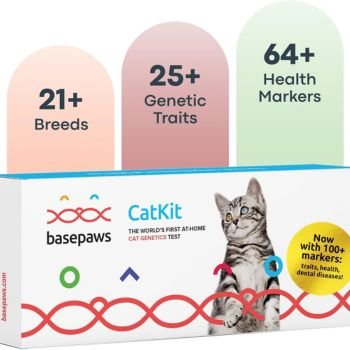Skin-related infections account for a major portion of the infections that affect cats. It all starts out as itching, and then an injury occurs, followed by inflammation resulting from infection. Complicating matters further is the fact that cats like to keep their furs clean, so, it might take you a while before you detect any obvious skin defect. Paying close attention to your cat and noticing any behavior that suggests the presence of a skin infection in cats is crucial because when it comes to skin infections, early detection usually makes all the difference.
Although skin infections are usually by no means life-treating, they can cause serious irritation; making the cat very uncomfortable. And no one wants to have a cat who is restless and irritated. In this article, we will be looking at common skin infections, causes, symptoms, diagnosis, and treatment as it relates to cats.
TYPES AND CAUSES OF SKIN INFECTIONS IN CATS
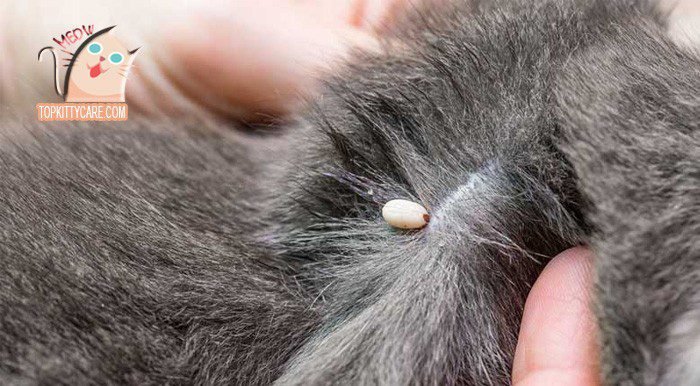
Here are some of the common skin-related infections in cats and their underlying causes.
- Allergies: Allergies in cats can arise from different sources including the environment (dust, pollen or mold), food substances, insects (fleas) and drugs. When cats come in contact with toxic substances like chemicals lying around the house, skin infection results. When a cat ingests food that’s its allergic to, skin infections, vomiting, and diarrhea are usually the common signs to show that an allergic reaction is taking place. Just like in humans, drugs sometimes can have harmful effects in cats, these effects could show up as skin infections. However, the most widely popular allergic skin infection in cats is flea allergic dermatitis (FAD). FAD is caused by fleas. When fleas bite cats, the cats develop an allergy to the flea’s saliva, which results in intense itching, and hair loss.
- Bacterial Infections: These usually occur as a result of injuries, or bites (especially from other cats). When bacteria cells find their way into the cat’s skin via wounds, the bacteria multiply and causes an inflammation which results in a swelling filled with pus.
- Fungal Infections: Ringworm and yeast infections. These fungal infections can easily be transferred to humans, so, it is important that they are detected early.
- Parasitic Insects: In response to the presence of parasitic insects like mites, tick or lice, cats experience severe itching which leads to injury and eventually, an infection.
- Skin Cancer: Cats are also prone to skin cancer. And as we know, cancer is deadly, so if you notice any changes in the skin of your cats, contact a veterinarian immediately.
>> Read more: Common Cats Skin Diseases That You Need To Know
SYMPTOMS OF SKIN INFECTIONS IN CATS
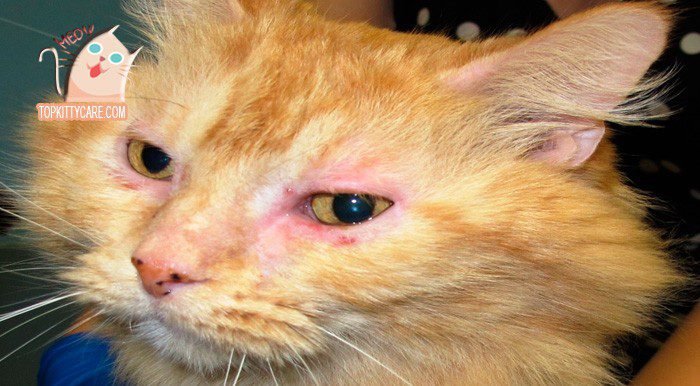
Some of the common symptoms highlighting the presence of skin infection in cats include;
- Incessant scratching and licking of the skin. This shows that the cat is experiencing an itching sensation.
- Red or swollen skin.
- Hair loss or bald spots. The cat appears to have shed more hair than before.
- Scaly or Flaky skin
- When cats shake their head excessively, this usually shows the presence of skin infection in the ear or an ear infection.
DIAGNOSIS OF SKIN INFECTIONS
Before seeking the services of a vet doctor, you could examine your cat for any lesions or sores. Carefully run your hand through the cat’s fur, check for bite marks, and scratches. Check underneath any skin folds; skin folds usually encourage the growth of bacteria. Take note of when the cat started itching, did the cat start itching before or after the infection developed? This will help you know whether the infection was caused by external or internal factors.
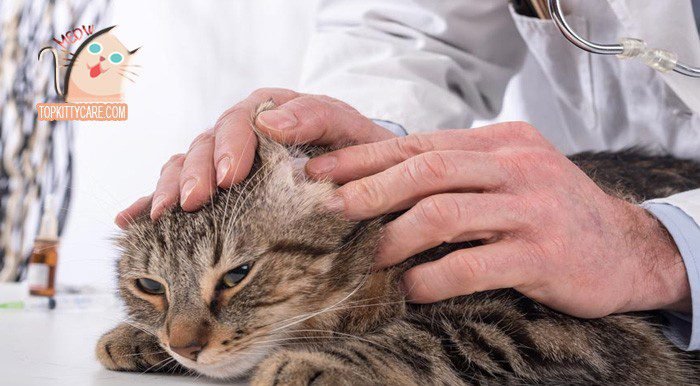
In accurately determining the cause of a skin infection, the vet doctor would have to carefully examine the skin of the cat, consider the cat’s previous illnesses, and run some diagnostic tests.
It is also common for doctors to make a diagnosis based on how the cat responds to a particular treatment. This treatment can include prescribed medication, change in diet, or change in living habits. Based on how the cat responds, doctors can rule out certain causes or affirm previous suspicions.
Some severe skin infections like pyoderma cause fever in cats. Symptoms of fever in cats are loss of appetite and withdrawn behavior. So, do well to report any changes in how your cats behave, this will help the doctors come to a more informed conclusion.
TREATMENT OF SKIN INFECTIONS IN CATS
The type of treatment employed will depend on the type or cause of the skin infection. For infections caused by fleas, if the infection has resulted in a pus-filled swelling, and is in one location, the cat’s fur around that area is shaved and treatment products are applied, if the effect is spread over a large area, there are potent sprays that can be effective. Fleas also have to be eradicated from the environment where the cat lives so the infection doesn’t reoccur.
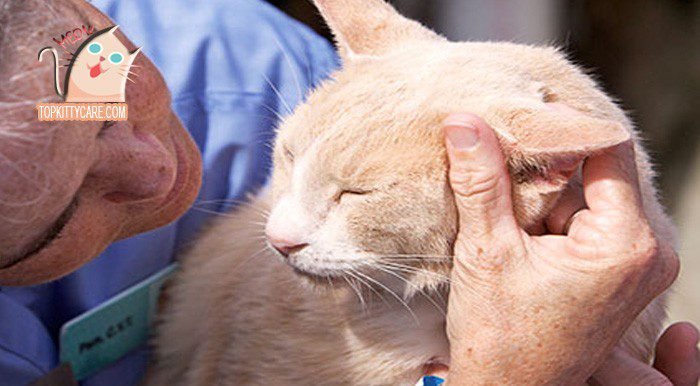
For allergies, eliminating causative substances will help. Give the cat food that doesn’t contain substances to which it is allergic, rid the environment of any dust, pollen or mold. Keep any harmful substances in places inaccessible to the cat. After eliminating the cause, administer medication to kill the infection.
For fungal and bacterial infections, treating the site of the infection and administering antibiotics and anti-fungal drugs should do the trick.
Irrespective of the type or cause of infection, there is usually inflammation. Inflammation promotes more itching and protracted itching results in skin damage which then worsens the infection and leads to more inflammation. So, preventing itching is very important in treating any skin infection. A veterinarian would know what to do to prevent itching.
CONCLUSION
In most of the cases, do eventually go on to fully recover from skin infections in cats. So long as the treatment regiment is strictly adhered to. Even if the infection seems to have been vanquished, always finish the prescribed dosage. As earlier said, early detection is important, so, regularly inspect your cat’s skin for any abnormalities. Be attentive to their itching habits and behavioral changes.




